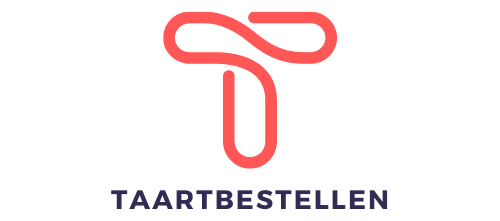How to Use Crowdsourcing to Improve Public Transport Planning in the UK?

It seems we have arrived at a critical juncture in our journey towards creating smart cities. Urban spaces are now more than just physical entities, they are data-rich environments that offer valuable insights about their inhabitants. This wealth of data presents unique opportunities, particularly in enhancing public transport planning. How exactly? Let’s delve into the world of crowdsourcing.
Harnessing the Power of Crowdsourcing for Urban Planning
In this era of digital revolution, the practice of crowdsourcing has gained considerable traction. It involves gathering information from a large group of people, typically over the internet. This principle, when applied to public transport planning, can yield remarkable results.
En parallèle : Find your dream surf camp experience in Nicaragua
Crowdsourcing allows the public to actively participate in shaping their city’s transport networks. By sharing their experiences and suggestions, commuters can help planners gain a more accurate understanding of the transport system’s strengths and weaknesses.
In the context of the UK, where public transport is a significant part of everyday life, crowdsourcing can uncover hidden patterns, preferences and pain points. For instance, data sourced from users can reveal high-traffic areas that need additional buses or trains during peak hours. The social mapping of commuting patterns can also help identify under-serviced routes.
A voir aussi : How to Develop Community Sports Programs to Boost Public Health in the UK?
Imagine a scenario where you, as a commuter, can report an overcrowded bus route or a consistently late train via a mobile app. This data, when collected from thousands of commuters, translates into a powerful tool for public transport planning.
Overcoming the Challenges of Data-Based Transport Planning
While crowdsourcing presents numerous opportunities, it also comes with its fair share of challenges. The key challenge lies in processing and interpreting the vast amounts of data collected.
Crowdsourced data can be messy and unstructured. To harness its true power, it needs to be carefully reviewed and analysed. This is where data science enters the picture. Advanced data analytics methods can help uncover patterns and trends from this raw data.
Ensuring data privacy is another crucial challenge. Crowdsourced data often involves sensitive information about individuals’ location and travel habits. Therefore, it’s paramount that data collection and storage procedures comply with data protection regulations.
Lastly, we cannot ignore the digital divide. While smartphone penetration is high in the UK, not everyone has access to internet-enabled devices. Thus, any crowdsourcing initiative needs to ensure that it is inclusive and does not exclude those unable to contribute digitally.
Case Studies: Utilising Crowdsource Data in Public Transport
Several cities worldwide have successfully integrated crowdsourcing into their transport planning processes. These case studies offer valuable lessons for the UK.
In Helsinki, a crowdsourcing campaign called "Route Planner" attracted over 10,000 suggestions from the public for improving the city’s transport network. The campaign resulted in significant changes to bus routes and schedules.
San Francisco’s Bay Area Rapid Transit (BART) utilises a crowdsourcing platform that allows riders to report in real-time about their commuting experiences. This platform facilitates immediate action on issues like station cleanliness, staff courtesy, and safety concerns.
These examples demonstrate that crowdsourcing can be a potent tool for public transport planning. By allowing commuters to voice their experiences and suggestions, cities can make informed decisions that best serve the needs of their public.
Towards a Scenario of Smart City Planning in the UK
Crowdsourcing can be a game-changer for public transport planning in the UK, transforming it into a more participatory and data-driven process. By harnessing the collective intelligence of commuters, transport planners can gain valuable insights to improve services.
Moreover, crowdsourcing initiatives can also build a sense of community among commuters. When people see their suggestions being implemented, they feel a sense of ownership and are more likely to engage in future initiatives.
To fully leverage the potential of crowdsourcing, it’s important to have robust data management processes in place. Data analytics tools can help sort through the noise and identify valuable insights. Ensuring privacy and inclusivity is another critical aspect that needs careful attention.
In conclusion, as we move towards the vision of a smart city, it’s clear that crowdsourcing will play a crucial role. By embracing this approach, the UK can take a significant step forward in making its public transport more efficient, accessible and user-friendly.
The Role of Technology and Social Media in Crowdsourcing for Transport Planning
The advent of technology and social media has provided a new dimension to the concept of crowdsourcing. Social media platforms, such as Facebook and Twitter, can be a rich source of public opinion and local knowledge about transport conditions. For instance, tweets about traffic congestion or Instagram stories about delayed trains can be valuable data points for transport planners. They provide real-time, ground-level insights that can help identify problem areas and opportunities for improvement.
Web-based platforms have also emerged as powerful tools for collaborative mapping and data collection. These platforms allow users to share their experiences and ideas, contributing to the creation of a comprehensive and dynamic map of the city’s transport network. For example, platforms like Waze and Google Maps rely on user-generated data to provide traffic updates and suggest optimal routes.
Technology can also facilitate public participation in transport planning. Through online surveys and forums, the public can express their views and suggestions. This open access to planning processes encourages idea generation and fosters a sense of involvement among the public.
In the realm of smart cities, new forms of data, such as those derived from Internet of Things (IoT) devices, can augment crowdsourced information. IoT devices, like sensors and smart meters, can provide granular data about transport usage, helping to build a clearer picture of the city’s transport needs.
However, the potential of technology in crowdsourcing is contingent upon the appropriate use and analysis of data. Data science techniques, such as machine learning and predictive analytics, can help with this. They can filter out the noise from the vast amounts of data, revealing useful patterns and trends.
Conclusion: The Future of Crowdsourcing in Public Transport Planning
As we look towards the future, it is evident that crowdsourcing will play a pivotal role in shaping the public transport landscape in the UK and beyond. The collective intelligence of the public, combined with advanced data analytics, can drive significant improvements in transport planning.
The integration of crowdsourcing methods into transport planning processes can lead to more responsive, flexible, and efficient public transport systems. By listening to the public, cities can ensure that transport services align with the needs and preferences of the users.
The smart city concept further amplifies the potential of crowdsourcing. With the growing proliferation of data-rich environments, cities can gain deeper insights into their transport networks. This, in turn, can facilitate more informed decision-making and result in better transport outcomes.
In moving forward, there is a need to address the challenges associated with crowdsourcing, particularly with regards to data quality, privacy, and inclusivity. Ensuring the responsible and ethical use of crowdsourced data is critical. It’s also important to ensure that crowdsourcing initiatives are accessible to everyone, not just those with internet-enabled devices.
In conclusion, crowdsourcing, with the support of technology and social media, is a powerful tool that can revolutionize public transport planning. By involving the public in planning processes, we can create transport systems that truly serve the needs of the community. A collaborative, data-driven approach to transport planning paves the way towards the realization of smart cities, where public transport is efficient, sustainable, and user-centric.
